Super Mario 64 turns 25: Examining the impact of the N64's most revolutionary game - hartidowed
Tiptop Mario 64 turns 25: Examining the impact of the N64's most group action game
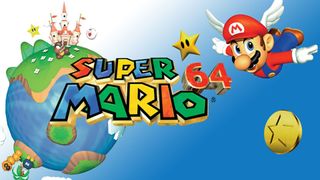
Nintendo has always been a company that has set its own agenda, and that has rarely been many plain than it was with the N64. Rather than following like 3DO, Sega, and Sony into the CD-ROM market, it stuck doggedly to cartridges. Instead of simply evolving the SNES pad, it produced a radical divided controller design. Neither of those design choices proven to be the future – information technology's a large order to convince an entire industry to do things differently, afterwards all. The thing that made people conduct billet was Super Mario 64, though – a bold and unique design, just like the machine it ran on. Notwithstandin, unlike its legion hardware, it made a profound impact on the rest of the diligence, shaping the development of future platform games and 3D games in world-wide for years to come.
Of course, Super Mario 64 had to be a dauntless design. The one common sport of 3D platform games released before Super Mario 64 is that they were all different creations, atomic number 3 no two developers had the same vision of how to adapt the genre to the polygonal revolution. Exact gave us Jump Scoot!, a game which offered free-roaming stages, viewed from a first-person perspective. Realtime Associates delivered Tease!, which faced 3D stages comprised of engagement straight paths, thence strictly regulating player movement. Xing's Floating Runner utilised free-roaming stages but employed a fixed view that ready-made it feel almost like a top-down 2D game. Straight-grained if Nintendo had hot to follow convention with Mario's 3D debut, there was simply no convention to follow.
The other reason that it had to be a groundbreaking game was the slant of anticipation placed upon it at the time. "Up until Mario 64, and probably until Mario Galaxy, there has always been expected value surrounding a new Nintendo console and with it a early Mario," says Paul Davies, who was the editor of Computer & Video Games during the development and release of Big Mario 64. "So, even though we had no idea how this would get on, the candidate of Ultra 64 Mario was enough to affect your breathing for a patc."
Ahead of the rivalry
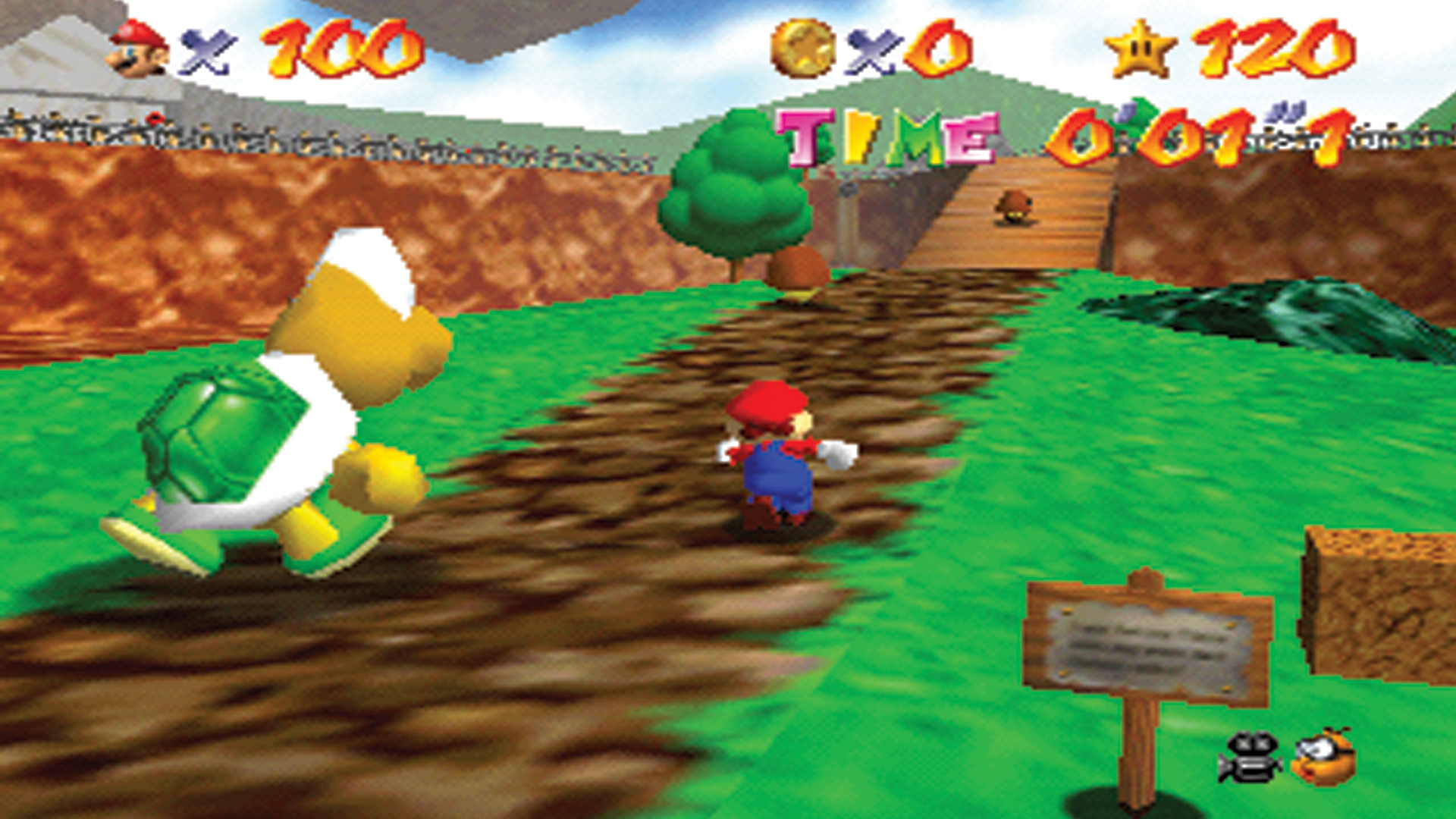
Even those stuffy to Nintendo weren't aware of what was in the works. "I was working for Computer software Creations at the time and they were parting of the original 'Dream Team' of developers operative along N64," recalls John Pickford. "I was lucky enough to be part of a group to visit the Shoshinkai 1995 show in Tokyo for the opening unveiling of the Ultra 64 and its software. When we landed at the airport I commemorate bumping into respective other British developers, including the Stampers from Rare and David Jones from DMA design. David said something along the lines of, 'I hear Mario is looking at very good.' That was the get-go clip I had heard thither was a Mario game in development. There had been goose egg publicity or even mention of Mario until that period."
Placards at Shoshinkai said that the game was 50 percent complete, and even described Topnotch Mario 64 Eastern Samoa a temporary claim, but that wasn't the impression that attendees took gone from the event. On a visual unwavering lone, Nintendo had already produced something stunning. "The game was shown along the show floor – looking smooth and playable," says John. "And like nothing else I'd ever seen." St. Paul was also present the show, and the game made a similar impression on him. "Information technology sounds incredibly bromidic, simply I couldn't believe my eyes. I was gobsmacked, bowled over."
That initial showing evoked strong emotional reactions from all who power saw it. "I was so excited, I tried to impress the hotel staff with my bagful of press materials and transparencies," Paul the Apostle confesses. "They were not impressed." According to John, other people were spirit something closer to fear, operating room at the least disaffirmation. "I don't have it off if information technology's honest just I heard a rumour that 'Sony execs' were departure approximately recounting citizenry that the game was running happening hidden 'workstations'," he recalls. "Rough to believe now merely a lot of the technical elements (MIP mapping, filtering, perspective-correct textures, z-buffering, hardware anti-aliasing) were all new to consoles and not present on PlayStation."
The version of Super Mario 64 shown at Shoshinkai in Nov 1995 mightiness not look immediately recognisable to fans – even the associate enamour dormitory of the rook is different, lacking the mist murals and even the central staircase seen in the final game – but that incredible visual polish carried over to the fattening game because there was no fabrication or trickery involved. The N64 was perfectly capable of all of those features, and gave Super Mario 64's worlds and characters a belief of solidity that immediately placed both the game and console ahead of the competition.
"Everything just worked so incredibly slickly," says Andrew Oliver, then running Glover developer Interactive Studios. "In the 'other camp', we'd been amazed by PlayStation's 3D capabilities. Just, whilst Sony pushed all developers to fix 3D games, umpteen of us struggled with certain aspects. Cameras were shaky, 3D meshes showed cracks, textures warped and getting a third-mortal grapheme to feel really nice and for the camera to track it well always seemed just unreachable." Nintendo's game exhibited none of those problems. "Mario 64 was so professional, atomic number 102 shake, no shudder, or warp or swell textures. The PlayStation was 32-bit with whole number maths and the N64 was 64-bit with mobile-point maths, so there was good reason it worked such meliorate."
Sign R Jones, a former creative person for Ocean, was similarly condemned aback aside the saltation in 3D quality. "The artwork were jaw-dropping. I'd entirely truly played a few 3D games on the PlayStation and this was a massive improvement," he remembers. "Round things looked round and not like-minded a series of united-up straight lines. The colors were bright and reverberant and, despite many games claiming that playing them was 'like controlling a cartoon', I consider that with this game it had really and finally happened for factual. I remember everyone at school expression that Dub Traditional knowledge connected the Spectrum was like a toon back in 1984. Merely in truth it wasn't. Mario was the real number thing. It had actually happened."
A turning point
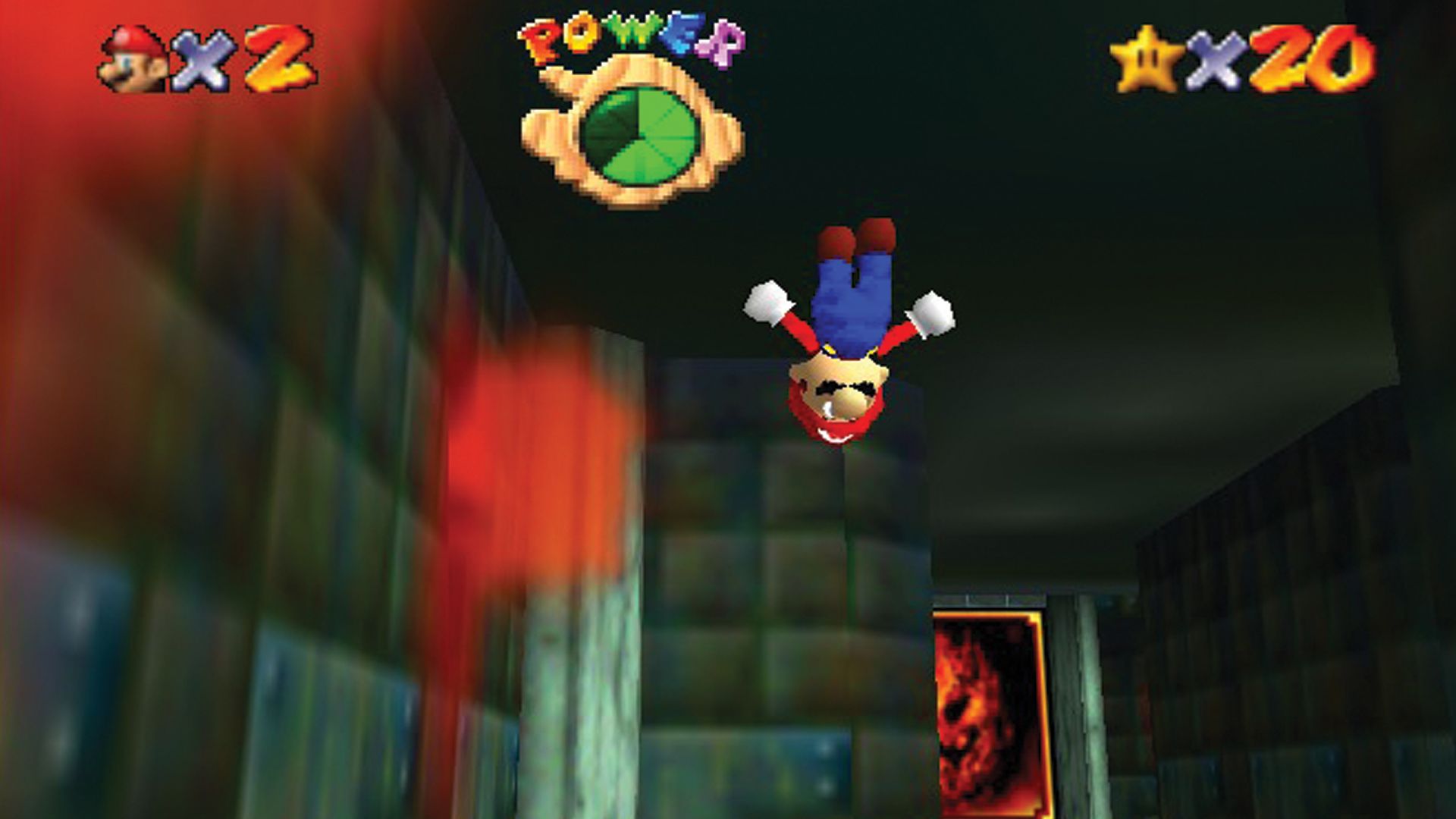
Subscribe Retroactive Gamer
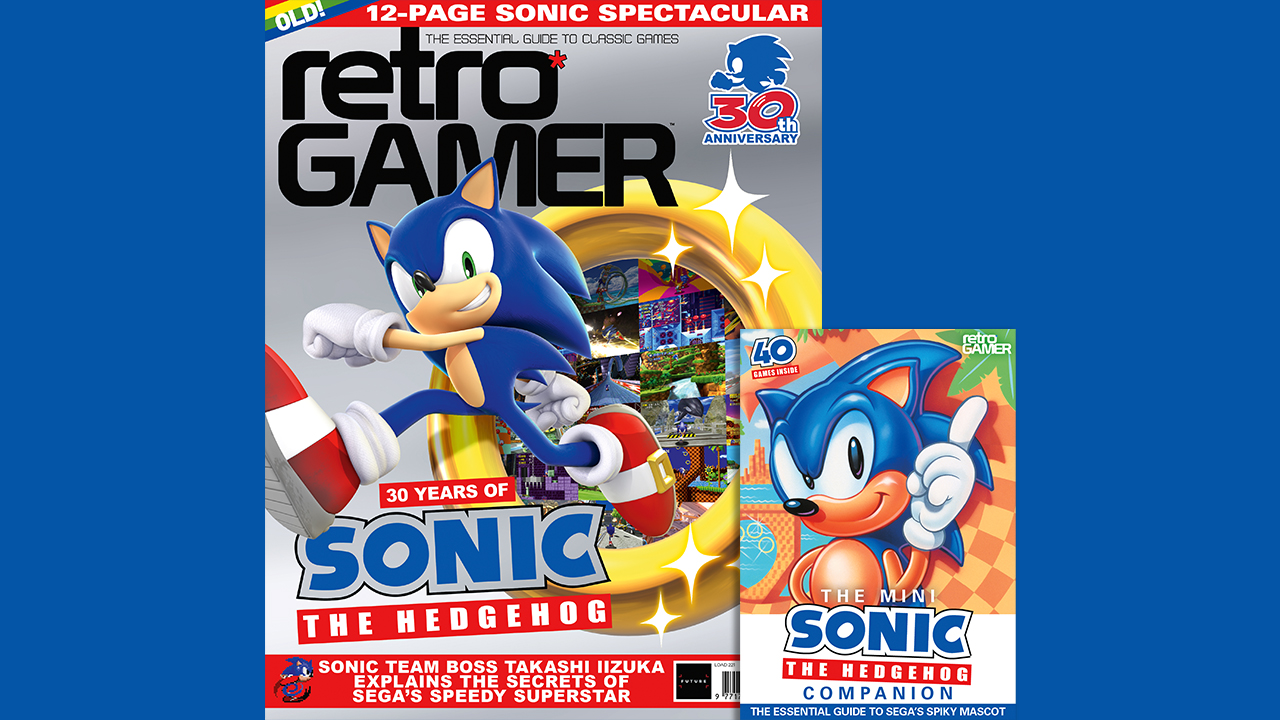
If you want in-depth features along classic video games delivered straight to your door or integer device, subscribe to Retro Gamer today.
The press directly set the hype coach in gesticulate. New images would appear in magazines every month, whipping expectancy rising to fever pitch – only it wasn't just the public that was excited. Even developers couldn't time lag to puzzle over their hands on the gage. "Organism a buff of the 2D Mario series I was fascinated away how they'd brought Mario into 3D, what problems they'd encountered and the approaches they took to tackling them," says Chris Sutherland of Playtonic Games.
At Rarified, then a Nintendo subsidiary, atomic number 2 served equally the lead coder on Banjo-Kazooie. "One power have expected the transition to 3D to have been in small stages, e.g. Nintendo could throw taken a time-honoured 2D Mario flow and given it hints of 3D (similar to the Donkey Kong Nation Returns) but instead they jumped in head first to ease up the player an immersive worldwide to explore," he continues. "This set the benchmark – anyone releasing a 3D platformer thereafter on N64 was passing to be compared with Mario by players!"
"Word got more or less the Killer Instinct barn that the newfangled Mario gamy was in the building so we whol piled into Chris Tilston's room for a gander," recalls Chris Seavor, another former Rare developer who led the development of Conker's Bad Fur Day. "I think this was a little bit before it actually released and it was the Japanese reading, so nobody could understand whatever of the text. Uncalled-for to say it was pretty mindblowing. I'd ne'er seen anything like it before. Then Tim [Stamper] turned up looking sooner mortified that we were all seeing this 'super secret' thing and took it away… Still, I'll never forget that moment."
Andrew's first experience with the game was every bit memorable. "It was the summertime of 1996 at the comparatively-new E3 evidenc in Los Angeles – Nintendo had a large stand with around 30 N64s set heavenward and dedicated to Mario 64 and people queuing three cryptical to postulate turns. Most were running around outside the rook – just enjoying the go through of running Mario around a beautiful animated cartoon fantasy Earth. They nailed the experience-good controls of a character functional around a 3D reality. Everyone was beaming – it was a corner for the industry."
Playing the plumber

The grandness of solid controls to Super Mario 64 can't be exaggerated. "It was the first meter I had played a game where messing around with the type's abilities was a great deal of sport even with nothing particularized to do," says Gregg Mayles, a Rare developer and Banjo-Kazooie's designer. "It has still not been familiar, in my honest opinion," Chris Seavor adds. "Slick, tight, great spiritedness and completely intuitive. The first try at such a control type and they nailed information technology for the ages."
As a matter of fact, he found that even the ungovernable aspects of controlling the fat plumber provided satisfaction. "There was a particular mechanic that took me ages to get to grips with, which involved jump off a wall, I just couldn't eff. Then one day whol my muscles suddenly twigged, and the sheer joy of jump finished and up from fence to rampart, in 3D, was a revelation."
Paul's first impression of the game centred on "using the important, solitudinarian linear stick to help Mario perform backflips and parry and wande around the first level of the mettlesome", and it was the linear stick that did much of the work in fashioning the game feel so good. Toilet explains the invoke considerably: "The self-centring thumbstick was the ordinal viable parallel joystick I'd come across. Parallel sticks take in been around forever but they were always near-enough impossible to use. Mario had facile, expressive, intuitive control of a character in a 3D world," he says.
"Second then, it was just about accepted that 3D platformers don't work. There had been a few noble attempts but they were all difficult and disorienting to act. Usually the gameplay was about overcoming the controls and camera restriction," he continues. "Mario 64 had you spurting, skipping, backflipping, climbing trees and even flying. Nintendo had done the impossible."
Freedom to explore

"With Super Mario 64 existence the first of its kind, that became the de facto place to search inspiration to solutions when we started building 3D platformers on N64."
Chris Sutherland
Of course, every of that excellent mastery would have been for cypher if the spunky didn't leave adequate space to utilise it, and challenges to get over. Nintendo delivered in both regards. Paul remembers the sense of disbelief in the office at the time. "The art designer of C&VG was interrogatory me all these questions, because he doubted that much of what he had heard was honest: 'Can I just run onto that bridge and jump into the water? And then I can float? Under the water?'"
For Gregg, the bodily structure was Eastern Samoa important as the infinite. "3D games up to this point felt restricted in where you could snuff it and what you could do, merely Mario 64 removed these restrictions," he explains. "The freedom made the worlds a joy to research, joined with a progression system which allowed you to tackle challenges in the order you wanted to."
Instead of the simple 'reach-the-destination' gameplay of 2D platform games, each course in Topnotch Mario 64 offered a selection of challenges, each of which awarded a Star upon mop up. They could set out from simply emplacemen red coins to defeating bosses, fetching races or honorable difficult platform challenges. Fifty-fifty Peach's Castle, the hub through which every other level was accessed, held Stars to feel. Naturally, every player had their favourite moments. "Cool Stylish Piles was a favored," says Gregg. "The way the slide race connected the teetotum of the level to the bottom was really clever and Mario getting cragfast headfirst in snow after a long fall was immaculate, sybaritic enamour."

"My memory is really muzzy, but when I try to recall anything information technology's same looking at my happier moments of childhood," says Paul as atomic number 2 recounts some face-to-face highlights. "Swingy Bowser by the bob. Finding that bottle underwater somewhere and being convinced that it held a threshold to a secret partition or something. We persuasion there would be treats hidden everywhere, and usually there was. Chasing the rabbit, because it was working away so may also, and being LED to something special." Tick found himself astounded by the longevity of the game. "Even later along, after you'd been performin the game for hours, there were unaccustomed things to see," he remembers, "like when Mario turned into liquid metal. You then have this wholly aluminiferous Mario, like the baddy from Terminator 2."
"Even more than ten years afterward it was quite common to attend programmers boot up Mario 64 to see how some aspect of the controls operating theatre camera systems worked," says John. "I'd say the first result of that was Tomb Freeboote which clearly benefited from that Shoshinkai 95 viewing – particularly with the swimming controls." Mark has a similar contain on the pun's determine.
"It did emphatically pave the way for the next generation of 3D platformers. Later games similar Banjo Kazooie and Equus asinus Kong 64, two of my most favourite N64 titles, wouldn't have been arsenic good had Mario not been also together," he remarks. "You tin just see the programmers at Rare having Super Mario set up next to their Stations of the Cross looking at it and saying, 'Right, now we have to serve that morsel better.' And in a great deal of cases, they did. But Mario showed the style forward."
Mark is dead on the money – the developers at Rarefied were definitely influenced by the work of what was then their parent fellowship when creating those games. "At the time we [were] experimenting with a '2.5D' look for a platform game that felt like an evolution of the Equus asinus Kong Country games we had created, but after seeing Mario 64 we knew fully-3D worlds were going to be the forthcoming," Gregg confirms.
"In the past if we've looked to work out a problem we'd often flavour to take care how other games have tackled similar issues," Chris Sutherland says. "With Large Mario 64 being the prime of its tolerant, that became the de facto place to seek inspiration to solutions when we started building 3D platformers connected N64."
Making improvements

Superlative N64 Games
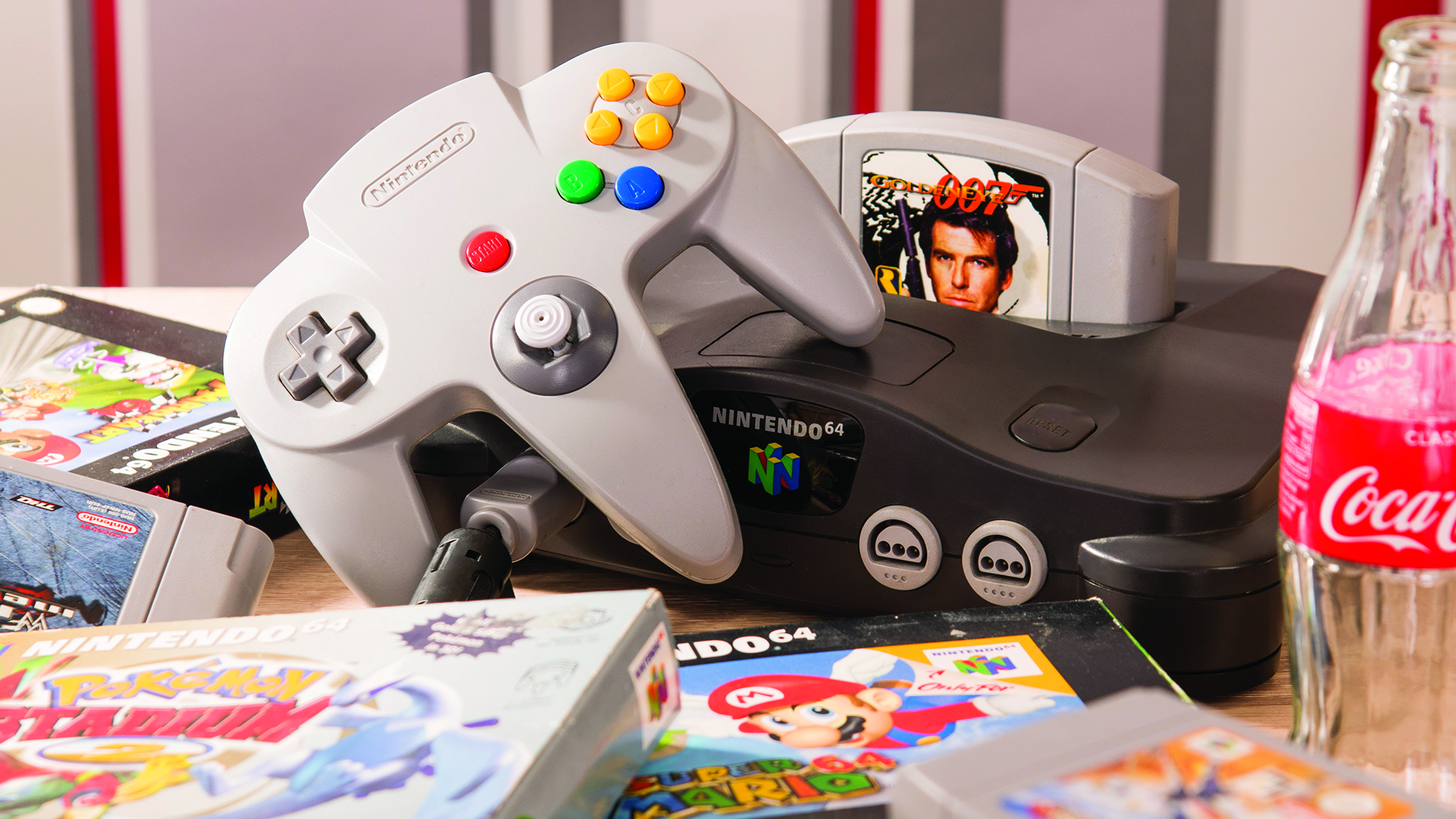
Super Mario 64 helped define Nintendo's 1996 console, but what were its greatest releases? Here's our authoritative maneuver to the trump N64 games to service you solvent that question.
However, there were definitely areas in which the Banjo-Kazooie team looked to improve upon the Super Mario 64 feel for, and they put out a lot of effort into identifying their game from Nintendo's classic. "We wanted to ensure Banjo-Kazooie had the Infrequent feel. I welcome Banjo the accept to have a very solid and predictable feel to his keep in line, as anti to the higher level of skill required to dominate the inactiveness that sometimes successful Mario's control provocative," notes Gregg. "I also wanted our worlds to feel a lot much grounded, basing each one in believable realism that was given a fantastic and humorous twist."
"We craved to see to a greater extent visual detail," Chris Sutherland elaborates, "especially as we'd just been producing very detailed pre-rendered visuals with games similar Equus asinus Kong Country. The dispute is to non overwhelm the player with detail – it still of necessity to be absolved what items can be walked connected, when a floor is slippy and and then on. Likewise, we wanted the computer architecture/geometry of the worlds to equal Thomas More complex and exciting – but in doing and so, the photographic camera that follows the player necessarily to become more building complex and clever to handle unusual situations and to avoid confusing the player."
Getting the camera right is a task that Gregg remembers vividly. "When I played Mario 64 I didn't feel the television camera was that good, only the reality of sporting how hard a job this is to get right become apparent when we created our possess camera systems," he reminisces. "In hindsight, Mario's camera had the right goals in trying to be as dynamic as possible and mostly got IT mighty. The 3D worlds that we created were even more interlinking than Mario's and created major headaches for us. Sadly a good camera system is invisible and something nobody talks about, but one that has even limited problems gets a lot of attention."
With Thin more wonted to 3D game maturation by the clock time of Conker's Bad Fur Day, many of those initial technical challenges were less of a problem. Still, it was a gage which tried to transcend Super Mario 64 in certain areas, and Chris Seavor pulls no punches in pointing them out. "The visuals… let's be honest, Mario 64 had some ugly-sounding assets in there," atomic number 2 notes, and it's fair to say that Conker came out ahead in this regard thanks to Rare's knowledge of the N64's ironware, and particularly its texturing quirks. The structure of the game was tweaked too. "We also added more of a narrative to the world, impulsive the player assumptive not so much to get the next Star, merely to see where the stories and characters lead-in you."
Still, Gregg is under no illusions as to how difficult it was to contend with such a groundbreaking stake."Mario 64 got so many things reactionist that it was hard for following games to make significant improvements," he opines. "Other games had more impressive visuals, used the performance of the ironware better and created worlds that had more deepness, but few got closely knit to matching things like Mario's keep in line."
3D incoming
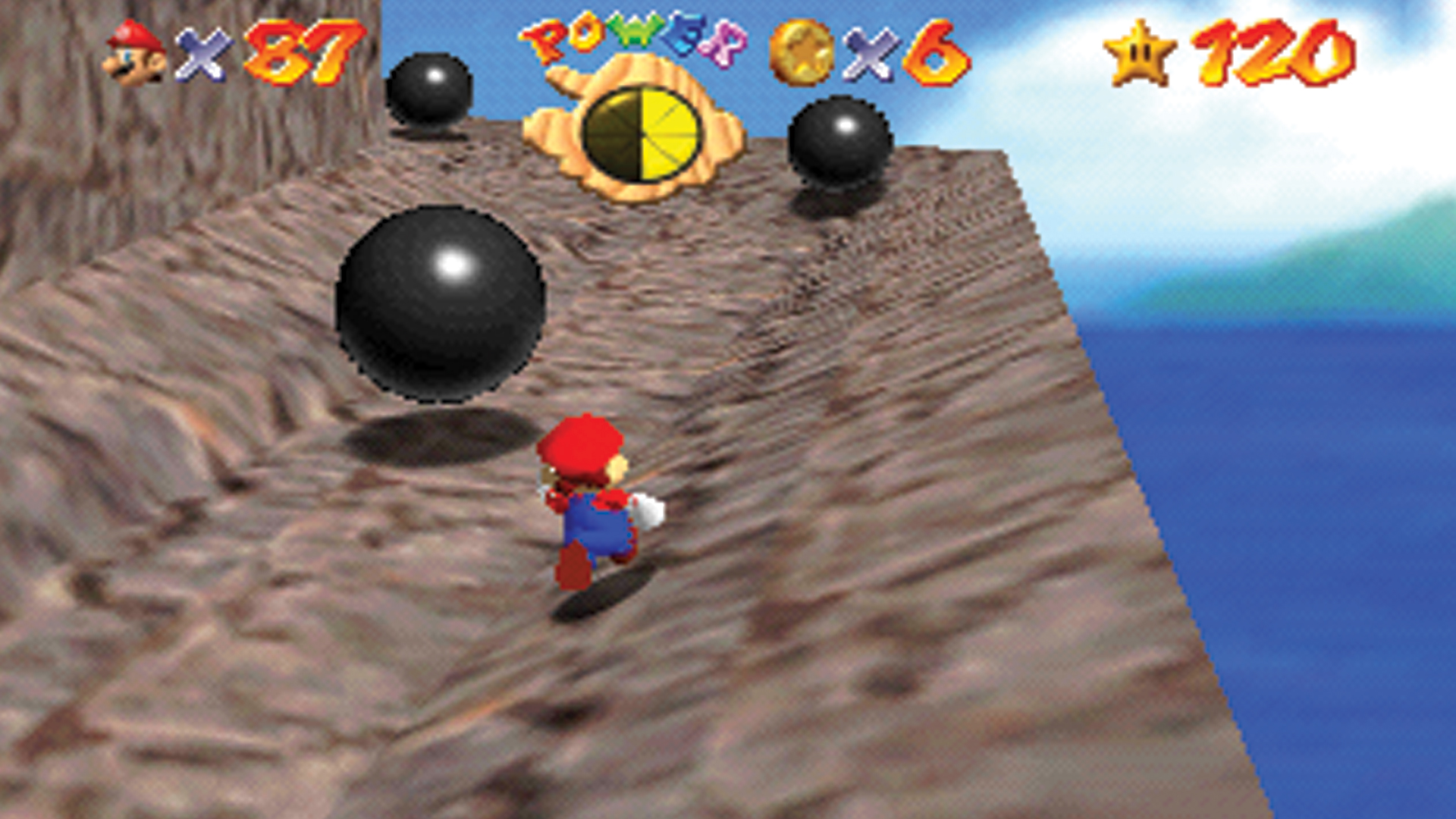
Over at Interactive Studios, the Glover team was discovering the unvaried matter. "Mario put off a high bar of quality to meet," says Andrew. "We were prototyping Glover, first along Personal computer and then on an N64 dev kit, and we were getting great results that we were rattling happy with. But suddenly, we were playing a immense game that had solved a few problems to a greater extent elegantly that we had. For example, IT had smoothed-skinned characters, unlike the hinged, metameric 3D characters that PlayStation and Glover had! We decided we had to ensure our characters looked just now as smooth and had to work up how to make an animated skinned character renderer."
That wasn't the only innovation that Andrew and the Glover team had to contend with. "We just spent ages trying to work out what the logic was for the camera then we could get somewhere close," he remarks. "Technically we patterned unsuccessful well-nig things, as Glover demonstrates, only Mario was still evidently a better game." With the developers telling us how immoderate they went to match Nintendo's effort, it's clear that Super Mario 64 had a immense impact on videogames, sol we asked them to measure it. For John, it was a game that expedited the pace of progress in gritty development. "Nintendo solved the problems of third-person control in 3D video games and conferred the industry with a 'how to do it' in the form of Mario 64," he says. "I intend the diligence would wealthy person figured IT out one of these days without Nintendo's help merely Mario 64 rescued us in all probability five years worth of failed experiments and clunky controls."
For Andrew, it was nothing little than cogent evidence that polygon engineering was actually viable. "It successful everyone actualize that 3D was the future, and not just of driving games, but all games! It looked so good, and gave some personality to the characters," he says. "The worlds were big and exciting and IT immersed players in a mysterious and handsome fantasy existence. Over on the PlayStation, it still felt that 3D was struggling and whilst technically impressive, the gameplay or graphics were generally agony for the 3D experience. Mario 64 showed the way forward for the whole industry!"
"It was the firstly of its kind and a genuine 'Wow Instant' in gaming that excited even the nearly satiated of people. It was a combination of revolution combined with one of the most outstanding and successful serial of games," says Gregg, summarising the legacy of the game. All the same, he also adds an main spot: "It's also stood the test of time. Sport Mario 64 today and it's still got the ability to translate you into a playful nipper where upright doing things without persuasion is great fun."
A lasting impression
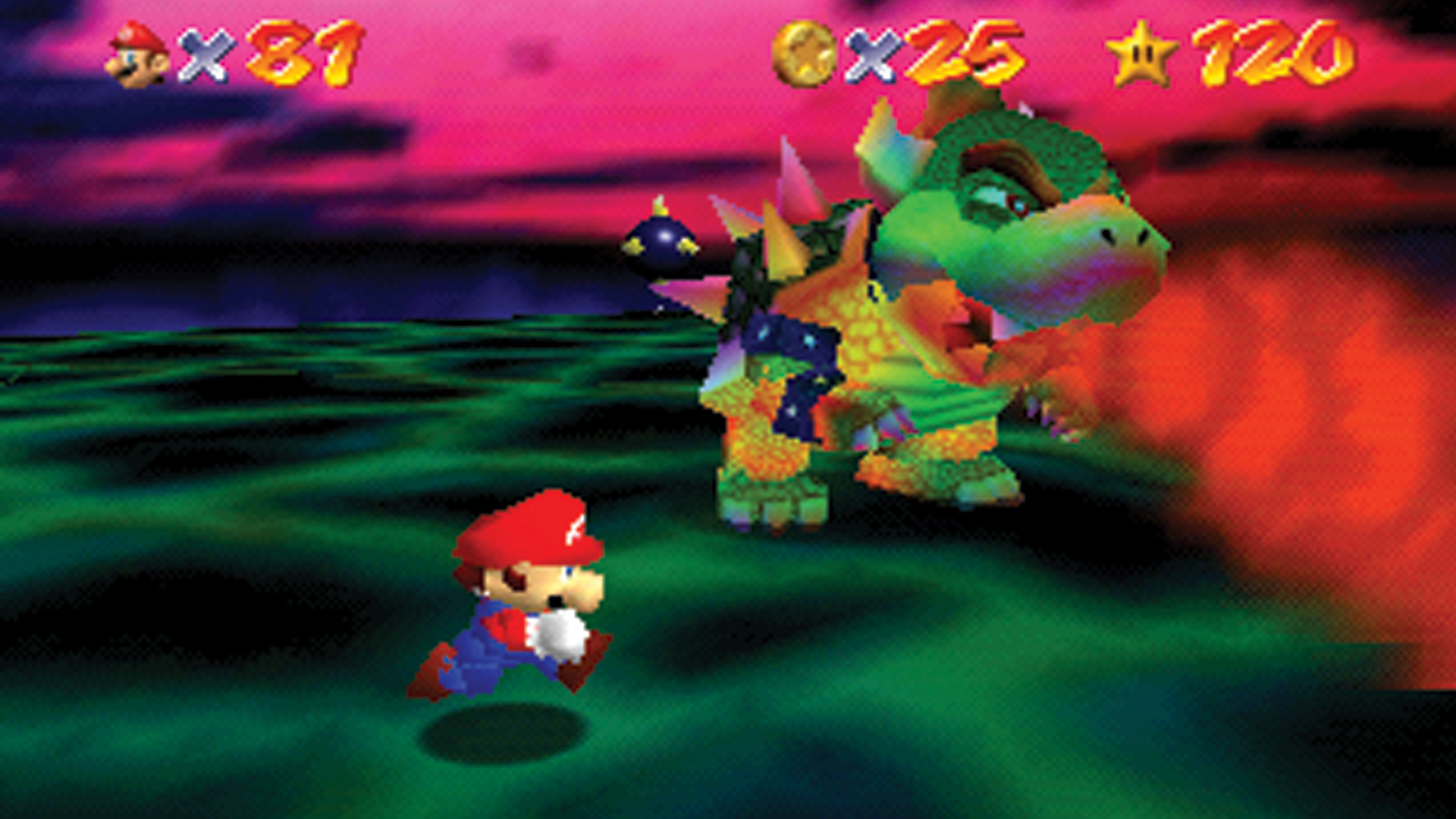
That's the key matter to remember approximately Mario 64. It was doubtless a groundbreaking and technologically thundering game, as the developers we've unwritten to have testified. Metre marches on though, and other games receive entered the conversation as points of reference for 3D game design. If Tiptop Mario 64 had just been a technical achievement, we'd think back information technology American Samoa an important release. But Comprehensive Mario 64 was e'er a supremely pleasurable game most importantly – and the decades that have passed since information technology released haven't dull that in the slightest.
"There were long time when I didn't toy it and when I got back into retro games I worried that it might not ingest preserved recovered and I was hesitant to have another go at it," Mark confesses. "But I nates happily report that even right away, with the novelty of the graphics having worn off, Mario 64 is still uncomparable of the best and to the highest degree fun games to play along any machine ever!" He's in no doubt as to why that is, besides. "Nintendo didn't just depend on the graphics to rio everyone, they besides stored up on the puzzles and gameplay. So they nonmoving spent as much time on the gameplay as they had done on the previous Mario titles just had added in this immense world that ostensibly explosion away of this trivial bit of pliant you just stuck in the go past of your machine earlier you turned it on."
That's wherefore Super Mario 64 is still arsenic relevant nowadays every bit information technology has ever been. The kids who grew upfield with N64s are adults now, and their love for the spunky and its successors is the reason behind the winner of crowdfunding campaigns for traditional 3D platformer revivals, including A Lid Soon enough and Playtonic's Yooka-Laylee. Large Mario 64's supreme gameplay is the reason that people are still playing today, years afterward virtually citizenry nabbed that last Star topology and had a chat with Yoshi on top of the castle.
People simply aren't tired of the game – and if you needed any proof of that, hop online and look at the abundance of First-rate Mario 64 accelerate runs, challenge runs and modified versions. But get into't take our word for it. Digging out a copy of Super Mario 64 and start ahead a new file. Spend a minute or two pottering around the castle to get a feel for how Mario controls before leap into Bobfloat-OMB Battlefield. We'd Be surprised if those few minutes don't turn into hours – and years later, developers are still trying to micturate games that are so compelling.
This feature first appeared in Retro Gamer magazine. For to a greater extent unrealistic in-deepness features, be sure to subscribe the black and white or digital edition at MyFavouriteMagazines .
Source: https://www.gamesradar.com/super-mario-64-turns-25-examining-the-impact-of-the-n64-most-revolutionary-game/
Posted by: hartidowed.blogspot.com

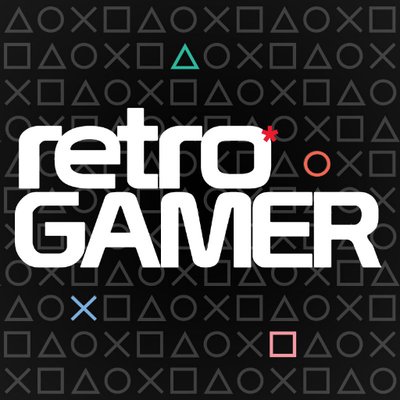

0 Response to "Super Mario 64 turns 25: Examining the impact of the N64's most revolutionary game - hartidowed"
Post a Comment